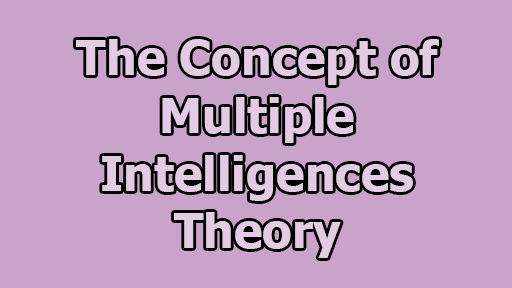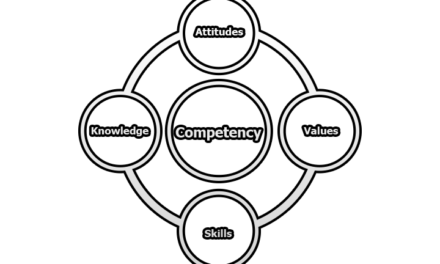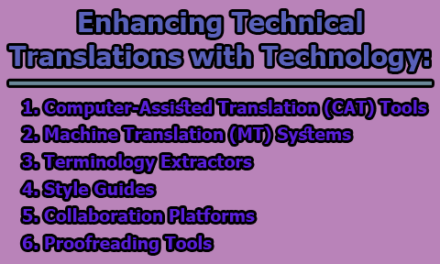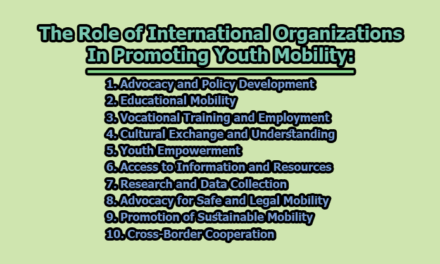The Concept of Multiple Intelligences Theory:
The landscape of intelligence has long been dominated by traditional measures, often focusing on verbal and mathematical prowess. However, Howard Gardner’s Multiple Intelligences Theory (MIT), introduced in 1983, has revolutionized our understanding of intelligence. This groundbreaking theory suggests that intelligence is not a monolithic entity but a diverse spectrum encompassing various capacities. Gardner’s theory has not only influenced the field of psychology but has also left an indelible mark on the education system, prompting a shift towards a more holistic approach. This article explores the concept of multiple intelligences theory (Gardner’s Theory), its development, and the implications it holds for education and society.
The Roots of Multiple Intelligences Theory:
To comprehend the genesis of the Multiple Intelligences Theory, it is imperative to delve into Howard Gardner’s background. Born in 1943 in Scranton, Pennsylvania, Gardner initially aspired to pursue a legal career. However, his encounter with renowned psychologist Erik Erikson during his time at Harvard University redirected his path towards scholarship. Gardner’s academic journey included a significant phase with the Project Zero research team on arts, founded by philosopher Nelson Goodman.
Gardner’s intellectual evolution took a distinctive trajectory, deviating from predominant discourses associated with figures like Piaget. The pivotal Project Zero, established as an educational research center, paved the way for Gardner to explore his interest in human cognition. The late 1970s witnessed the formation of the Project on Human Potential, funded by the Bernard van Leer Foundation, further consolidating Gardner’s exploration of scientific knowledge concerning human potential.
The Birth of Multiple Intelligences Theory:
In 1981, Gardner was honored with the MacArthur Prize Fellowship, providing support for Project Zero at Harvard University. In his acceptance speech, Gardner acknowledged his initial adherence to Piaget’s theories but ultimately found them too restrictive. This realization catalyzed the development of the Multiple Intelligences Theory, detailed in his seminal work, “Frames of Mind,” published in 1983.
Gardner’s theory challenged the conventional understanding of intelligence as a singular entity measured solely through reasoning and verbal skills. He proposed that intelligence comprises a spectrum of skills valued by society, including problem-solving, creativity, and the ability to provide services. Intelligence, according to Gardner, is dynamic, evolving throughout one’s life and manifesting in diverse ways.
The Foundations of Multiple Intelligences:
To extend the concept of intelligence beyond traditional tests, Gardner established criteria to define intelligence. Drawing from various disciplines, including biological sciences, logical analysis, developmental psychology, experimental psychology, and psychometrics, Gardner identified seven types of intelligence initially. Later, an eighth intelligence, naturalist intelligence, and the potential for a ninth, existential intelligence, were added.
The nine identified intelligences are:
- Verbal-Linguistic Intelligence
- Logical-Mathematical Intelligence
- Visual-Spatial Intelligence
- Bodily–Kinaesthetic Intelligence
- Musical–Rhythmic Intelligence
- Interpersonal Intelligence
- Intrapersonal Intelligence
- Naturalistic Intelligence
- Existential Intelligence
Each intelligence represents a distinct but interconnected way through which individuals acquire knowledge, understand information, and learn. Gardner’s definition of intelligence includes autonomy, essential operations for information processing, developmental background, and evolutionary roots.
The Dynamics of Gardner’s Multiple Intelligences:
Gardner’s theory asserts that every individual possesses the potential for all eight intelligences to varying degrees, forming a unique intelligence profile. This challenges the conventional notion that individuals can be solely classified based on a narrow set of cognitive abilities. For example, a child excelling in memorizing multiplication tables may not necessarily have a higher intelligence level than a peer struggling with the same task. The latter child may possess a different form of intellect, excelling in subjects that require different skills.
1. Verbal-Linguistic Intelligence: This intelligence pertains to the capability of using spoken and written language effectively. Individuals with high verbal-linguistic intelligence excel in reading, writing, storytelling, and word memorization. Careers associated with this intelligence include writers, poets, public speakers, and lawyers.
2. Logical-Mathematical Intelligence: This intelligence involves the ability to solve problems, carry out mathematical operations logically, and conduct scientific investigations. Individuals with high logical-mathematical intelligence excel in mathematics, computer sciences, and scientific thinking. Careers associated with this intelligence include mathematicians, logicians, scientists, lawyers, and doctors.
3. Visual-Spatial Intelligence: Visual-spatial intelligence involves recognizing visual patterns and details, making it prevalent in fields such as sculpture, surgery, chess, architecture, navigation, and piloting. Individuals with high visual-spatial intelligence have strong visualization and mental object manipulation skills, making them adept artists with excellent eye-hand coordination.
4. Bodily–Kinaesthetic Intelligence: This intelligence is characterized by the ability to use the body effectively in tasks, problem-solving, and production. Individuals with high bodily-kinaesthetic intelligence excel in physical pursuits, such as acting, performing, and creating. Learning by doing is a preferred method for these individuals, who may pursue careers as artisans, surgeons, mechanics, dancers, and athletes.
5. Musical–Rhythmic Intelligence: Musical intelligence involves sensitivity to sounds, rhythms, tones, and music, demonstrated in musical performance, creation, and enjoyment. Individuals with high musical-rhythmic intelligence can sing, play musical instruments, and compose music. Careers associated with this intelligence include musicians, vocalists, conductors, and composers.
6. Interpersonal Intelligence: Interpersonal intelligence enables individuals to collaborate effectively with others by understanding their goals, motivations, and desires. People with high interpersonal intelligence thrive in fields such as education, medicine, sales, politics, and religion. They excel in social interactions, becoming leaders or followers based on their ability to relate to others.
7. Intrapersonal Intelligence: Intrapersonal intelligence involves comprehending oneself and developing a useful working model of oneself. Individuals with high intrapersonal intelligence possess self-awareness and can understand their own goals, anxieties, and skills. They excel in intellectual pursuits such as philosophy, psychology, and religion.
8. Naturalistic Intelligence: Naturalistic intelligence involves the ability to identify and categorize items, often found in hunters, farmers, gardeners, artists, poets, and social scientists. This intelligence is associated with sensitivity to the natural world, including the capacity to grow, nourish, and handle living things. Careers aligned with naturalistic intelligence include those in science, nature, conservation, gardening, farming, and agriculture.
9. Existential – Spiritual Intelligence: Existential intelligence encompasses the capacity to comprehend a broad context or big picture, addressing profound questions about human existence. Individuals with high existential intelligence can synthesize concepts from various areas of study, posing and contemplating metaphysical issues related to life, death, and ultimate realities. Careers suited for individuals with existential intelligence include theologians, spiritual leaders, and philosophers.
Educational Implications of Gardner’s Multiple Intelligences Theory:
Gardner’s Multiple Intelligences Theory has profound implications for education, advocating for a more individualized and inclusive approach to learning. Traditional educational systems often prioritize verbal and mathematical intelligences, overlooking other valuable forms of intelligence. Recognizing and nurturing diverse intelligences can lead to a more enriching educational experience, allowing students to excel in areas aligned with their strengths.
Teachers can tailor their instructional methods to accommodate various intelligences, fostering a more comprehensive understanding of subjects. For instance, incorporating visual aids, hands-on activities, and collaborative projects can appeal to different intelligences, ensuring a more inclusive learning environment. Moreover, assessments can be diversified to measure a broader spectrum of intelligences, providing a more accurate reflection of students’ capabilities.
In conclusion, Howard Gardner’s Multiple Intelligences Theory has reshaped our perception of intelligence, offering a nuanced and comprehensive framework that acknowledges the diverse ways individuals acquire and process information. This theory transcends traditional measures of intelligence, emphasizing the importance of recognizing and cultivating the unique strengths of each individual.
As we continue to explore and apply Gardner’s theory in education and beyond, it is essential to appreciate the richness and diversity of human intelligence. Embracing the concept of multiple intelligences not only enhances educational practices but also fosters a society that values and celebrates the myriad ways individuals contribute to the collective tapestry of human capabilities.
References:
- Chetry, K. K. (2023). Study of multiple intelligences and study skills of secondary school students of Assam in relation to their academic achievement. (Doctoral dissertation). Rajiv Gandhi University. http://hdl.handle.net/10603/529127
- Gardner, H. (1983). Frames of mind: The theory of multiple intelligences. New York: Basic Books https://www.scirp.org/(S(351jmbntv-nsjt1aadkposzje))/reference/references
- Gardner, H. (1999). Intelligence reframed: Multiple intelligences for the 21st century. New York: Basic Books https://www.researchgate.net/publication/284540085_Intelligence_Reframed_Multiple_Intelligences_for_the_21st_Century
- Gardner, H. (2009). Types of Multiple Intelligences among Undergraduate Students at Yarmouk University in Light of Gardner’s Theory. International Journal of Humanities and Social Science, 4(6). http://www.ijhssnet.com/journals/Vol_4_No_6_April_2014/14.pdf
- Haley, M. H. (2022). Learner-Centred Instruction and the Theory of Multiple Intelligences with Second Language Learners. Teachers College Record. https://doi.org/10.1111/j.1467-9620.2004.00326.x
- Islam, M. N. (2019). Multiple intelligences in relation to academic achievement in second language English: A study among Madhyamik Pariksha passed out learners. IAHRW International Journal of Social Sciences Review, 7(5), 879-888. https://files.eric.ed.gov/fulltext/EJ1091511.pdf
- Neupane, D., Joshi, P, Acharya., & Acharya, D., (2018). A comparative study of multiple intelligence levels of secondary school students with reference to grade, International Journal of Applied Research, 4(4), 79-82. https://www.academia.edu/36636169/
- Pocaan, J. M. (2022). Multiple intelligences and perceptual learning style preferences of education and engineering students. International Journal of Professional Development, Learners and Learning, 4(2), 1-7. https://www.ijpdll.com/download/multiple-intelligences-and-perceptuallearning-style-preferences-of-education-and-engineering-12327.pdf
- Shaikh, N., Khan, S. M., & Wakpainjan, P. (2016). A Comparative Study of Multiple Intelligences of Students with Respect to Grades. The International Journal of Indian Psychology, 4(1):95-107. https://www.ijip.in
- Takahashi, J. (2013). Multiple Intelligence Theory Can Help Promote Inclusive Education for Children with Intellectual Disabilities and Developmental Disorders: Historical Reviews of Intelligence Theories, Measurement Methods, and Suggestions for Inclusive Education. Creative Education, 4, 605-610. http://www.scrip.org/journal/PaperInformation.aspx?PperID=36705
- Yavich, R., & Rotnitsky, I. (2020). Multiple intelligences and success in school studies. International Journal of Higher Education, 9(6), 107–117. https://doi.org/10.5430/ijhe.v9n6p107

Former Student at Rajshahi University










